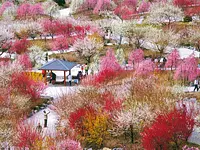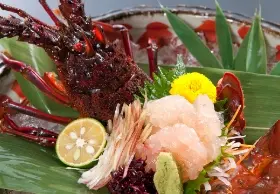
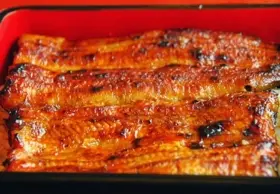
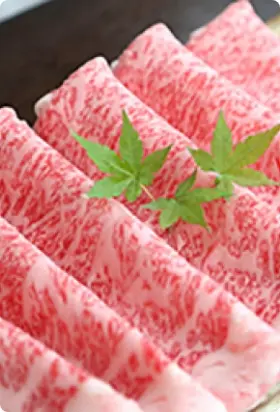
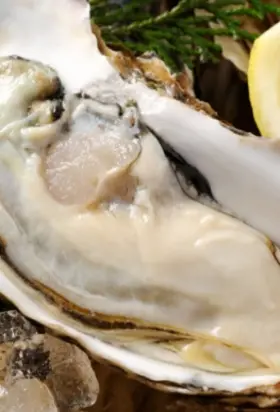
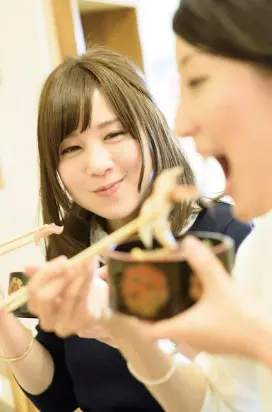
Japanese delicacies can be found in Mie Prefecture. From the luxurious ingredients that entertained the world at IseShimaSummit to the tastes of ordinary people, such as Ise-Udon and Mehari-sushi, please enjoy "Mie no Umaimon"!
spiny lobster
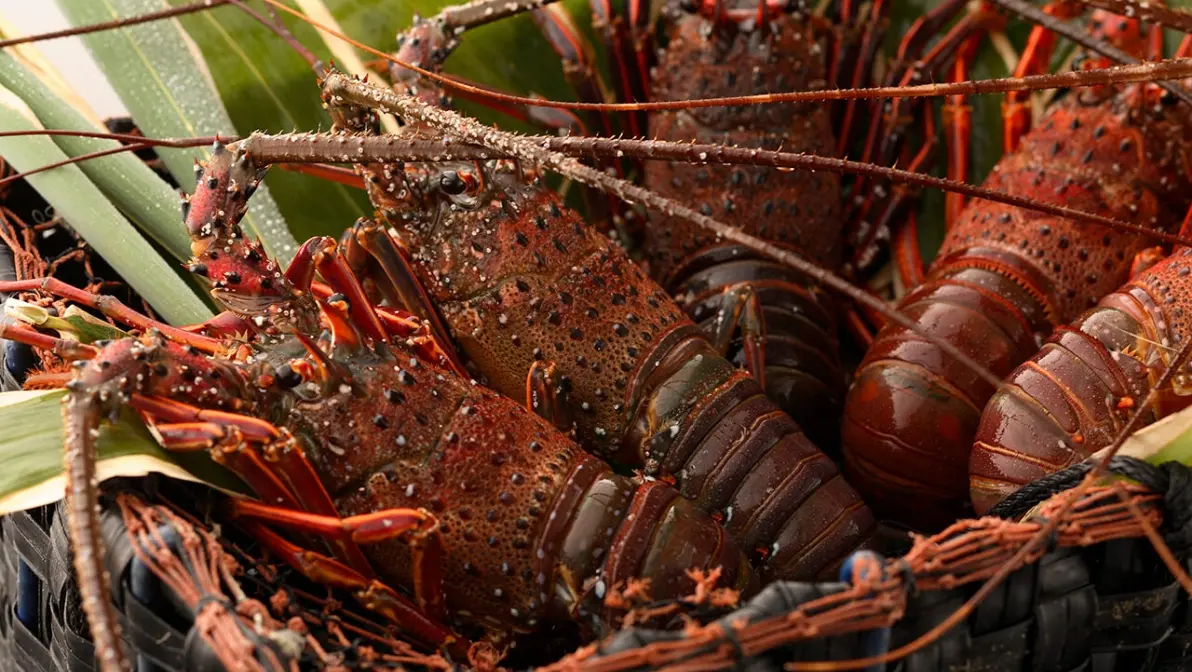
Seafood gourmet king of shrimp that brightens up your table!
The king of seafood gourmet shrimp is ``Ise shrimp''. Not only does it look big and gorgeous, but it also has a wonderful taste that combines the three signatures of sweetness, plump texture, and rich miso, making it a high-class ingredient worthy of the title of king. It is said to be good raw, grilled, or boiled, and can be enjoyed in a variety of ways, including sashimi, grilled oni shell, boiled with salt, miso soup, bisque, and thermidor.
Freshness is the key to sashimi. The subtly sweet sashimi is a real pleasure to eat freshly caught locally. Charcoal-grilled meat has a deep sweetness and aroma, and you can also enjoy the firm texture of the meat, giving it a blissful taste.
In Mie Prefecture, hunting is prohibited during the spawning season from May to September, and only large lobsters are landed. The finest products are made because we cherish the blessings of the sea. This is an authentic Mie brand that is protected by fishermen.
Oysters
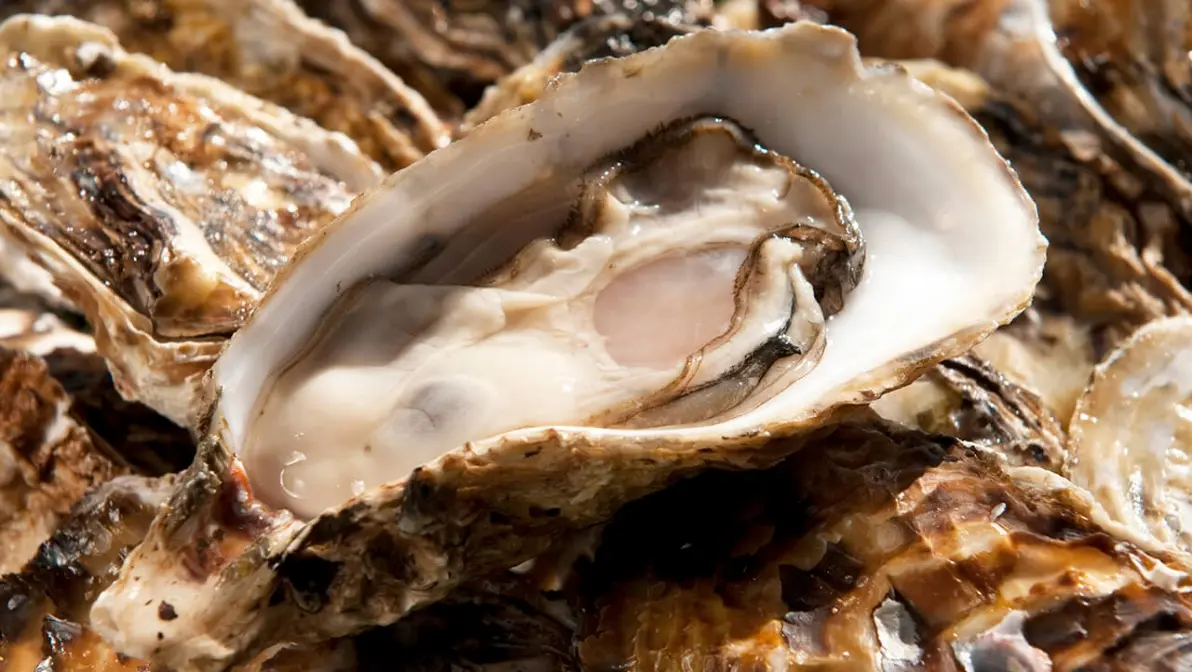
The clean ocean rich in minerals is the best fishing ground
“Oysters” are also one of the finest ingredients you should try in Mie Prefecture. Although the image of Hiroshima and Sanriku is strong, Mie is home to ShimaCity 's Matoya Kaki, a luxury brand that is highly praised by foodies. It grows plump in the rich ocean, and its sweet taste is just like sea milk. Oysters are also famous for being raised using a patented purification system, so you can enjoy the rich flavor that can only be enjoyed when eaten raw.
“Uramura Kaki” in TobaCity is also recommended. In the Uramura district TobaCity on the Pearl Road that connects Toba and Shima, there are oyster shacks that offer "all-you-can-eat grilled oysters" from mid-October to early April of the following year. You can eat it as is, or you can squeeze soy sauce or lemon on it. The services vary depending on the store, such as stores that allow you to bring in your own seasonings, stores that serve oyster rice or fried oysters, and stores that offer unlimited stuffing of oysters, so getting lost in choosing a store is part of the fun.
Matsusaka beef
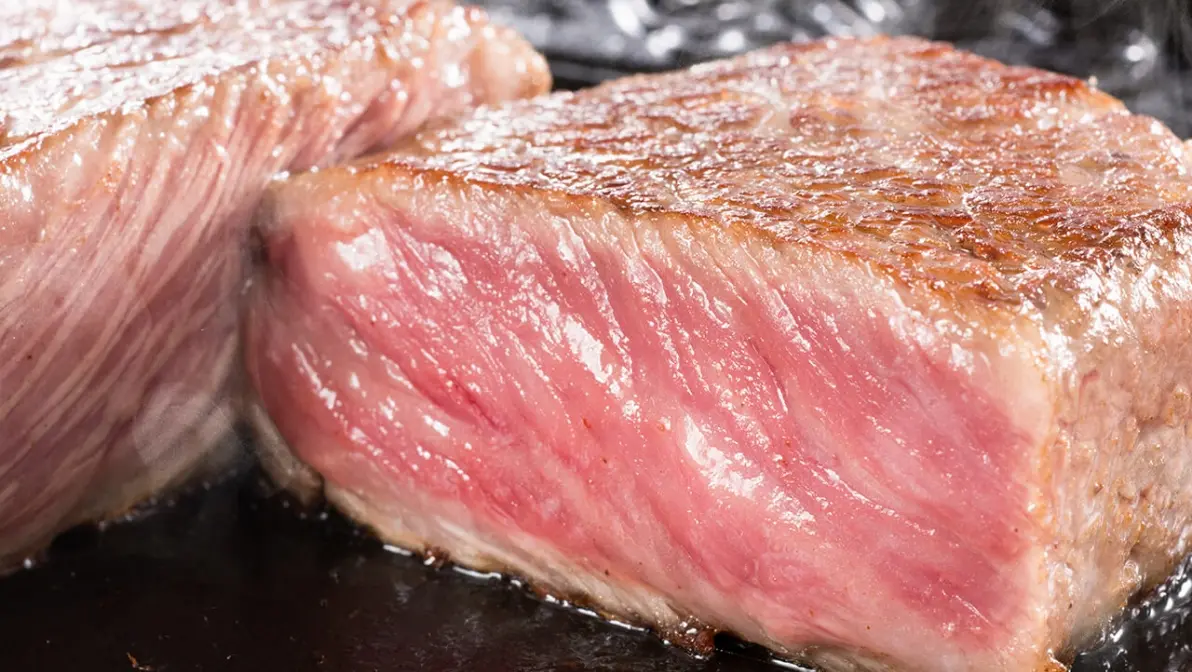
The fineness of the marbling is at the level of a "work of meat art"
Matsusaka Beef, a national brand food ingredient, is made from carefully selected cows with excellent bloodlines that are slowly grown over a long period of time, and the fineness of the marbling is so fine that it is called a "work of meat art." It is characterized by its high-quality fat and soft sweetness that melts in your palm.
The steak, which brings out the aroma of its fat when grilled, is very filling. The juicy Matsusaka beef steak, grilled just the right amount of rare, is exquisite. Tsu's favorite is sukiyaki. When you eat thinly sliced Matsusaka beef that is quickly cooked, it melts in your mouth. A unique way to eat Matsusaka beef with its high-quality fat. If you eat in a long-established tatami room, you can experience the Japanese atmosphere.
Very popular as gifts and souvenirs!
Ise-Udon
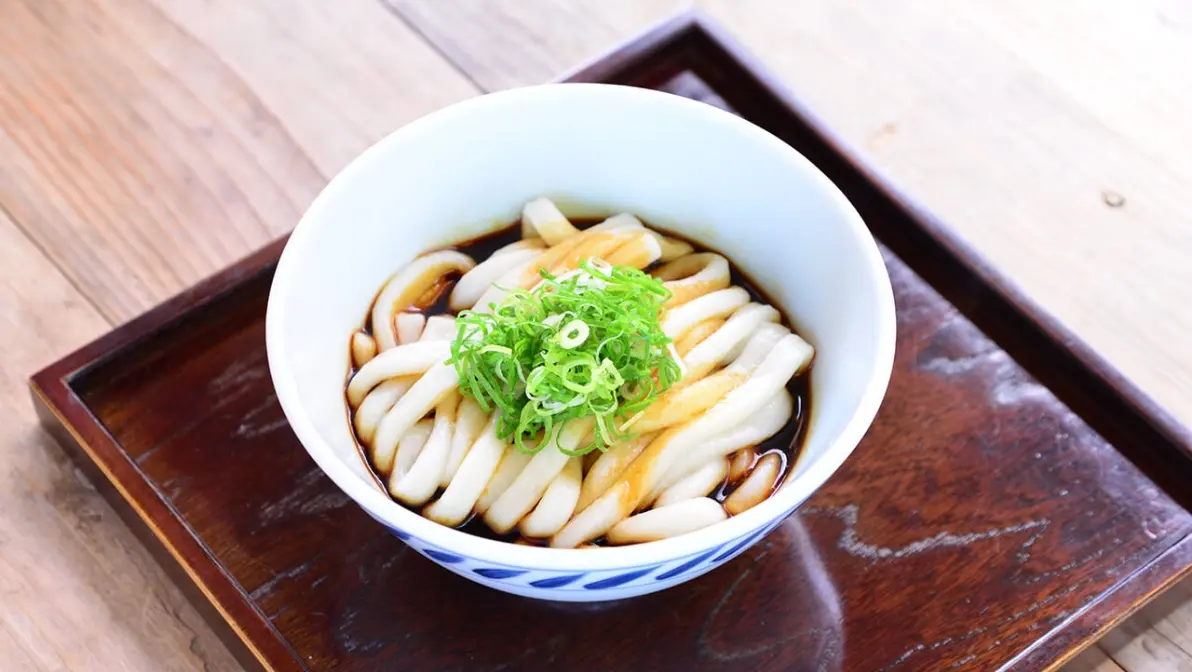
It's different from the udon you know! The sweet and spicy sauce is also addictive.
`` Ise-Udon'' has been eaten during pilgrimages to Ise since ancient times. This is a famous dish that features extremely thick and fluffy noodles coated with a black sauce made from tamari soy sauce, mirin, bonito flakes, sardines, and kelp stock. Ise-Udon, which is characterized by its ``surprisingly soft extra-thick noodles and rich sauce,'' is the polar opposite of Sanuki udon, which has ``chewy noodles and a light soup stock.'' After being boiled for an hour, it becomes so soft that it can be used as baby food. A popular theory is that ``it was made soft to soothe the fatigue of the long journey to Ise with something easily digestible.'' Mix well with the sweet and spicy sauce and enjoy with the sauce.
Eel
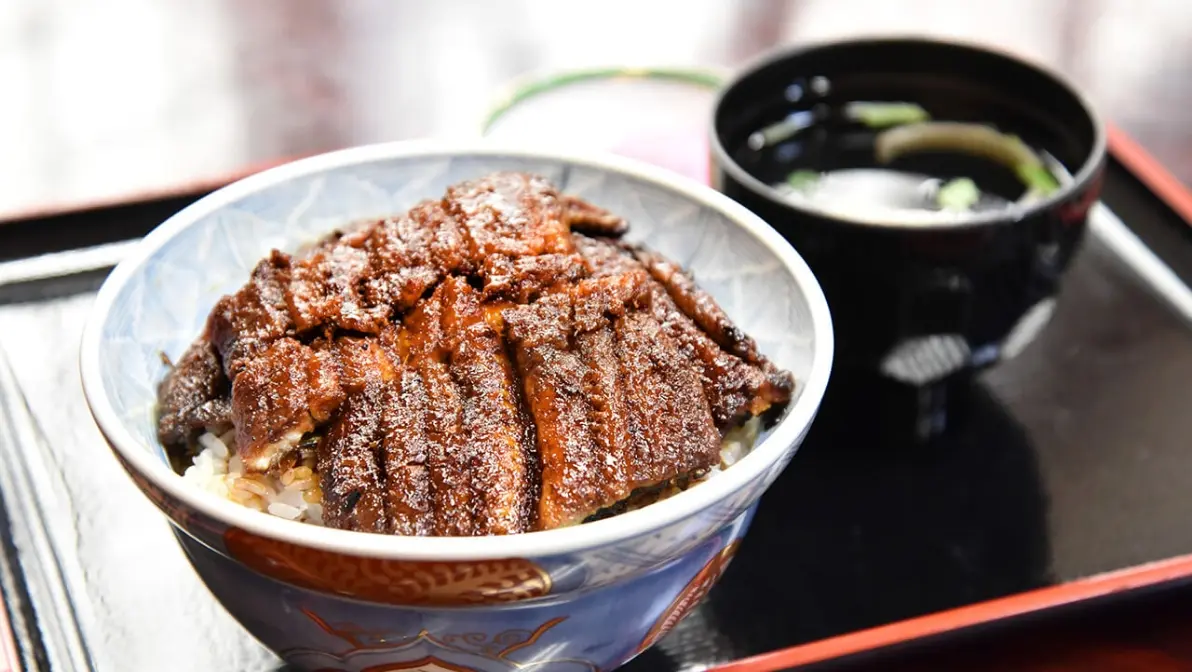
The flavor and aroma of the crispy skin whets the appetite.
TsuCity is famous for ``eel.'' There are more than 20 eel specialty restaurants in the city alone, and the city is said to have the highest per capita consumption of eel and the highest number of stores in Japan. A fragrant smell wafts from the front of the store, whetting your appetite. Tsu's eel is Kansai style. Because it is grilled without being steamed, the outside is crispy and fragrant, giving you the flavor of the skin, while the inside is thick, plump, and juicy. The fat is sweet and the volume is perfect. One of the great points about Tsu eel is that it is reasonably priced. Eel lovers will be happy. TsuCity used to be a popular place for eel farming, so there are many shops specializing in eel, and even now that eel farming is no longer practiced, it is still a popular delicacy among the city's residents.
Abalone
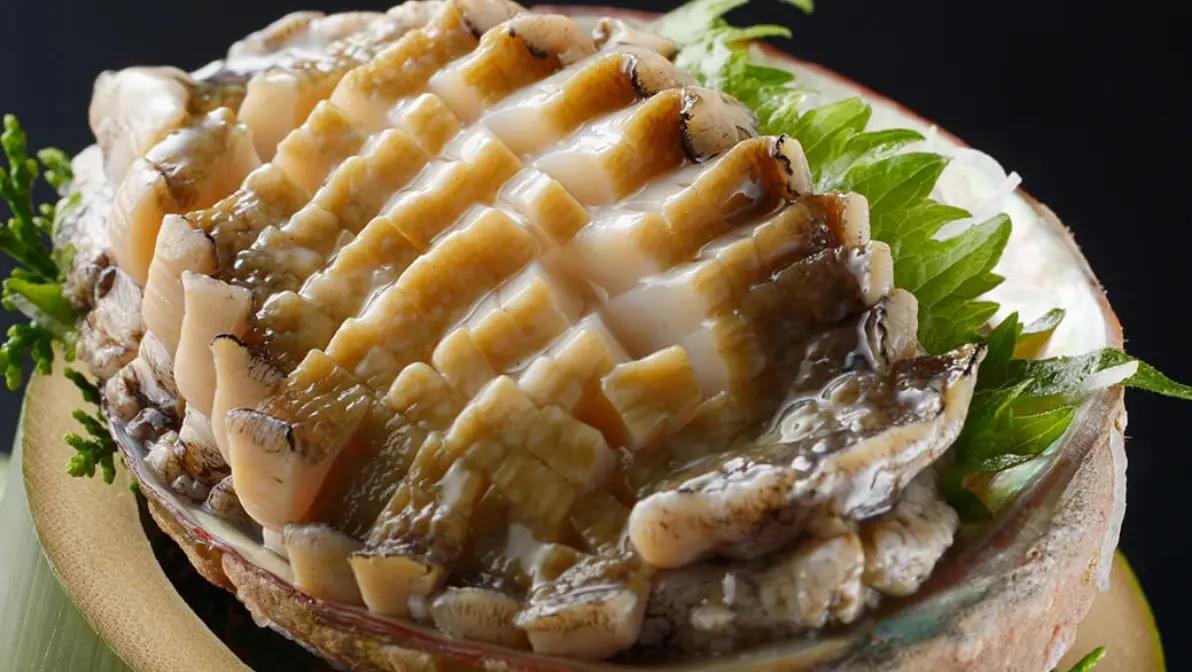
Enjoy Ama's hand-grilled abalone!
Abalone is a lucky charm that has been dedicated to IseJingu since ancient times. Abalone caught by Ama divers is a traditional specialty, and even now you can eat the shellfish caught by Ama divers at AmaHut(Amagoya)(a hut where Ama divers can relax). It's fun to eat freshly caught abalone hand-grilled by active ama divers while listening to stories about their fishing experiences. The thick black abalone can be enjoyed in two different textures: crunchy when made into sashimi, and soft enough to be easily pierced with a knife when cooked. Steaming locks in the rich flavor, making it the perfect accompaniment to alcohol. The season is mainly in the summer.
Turban shell
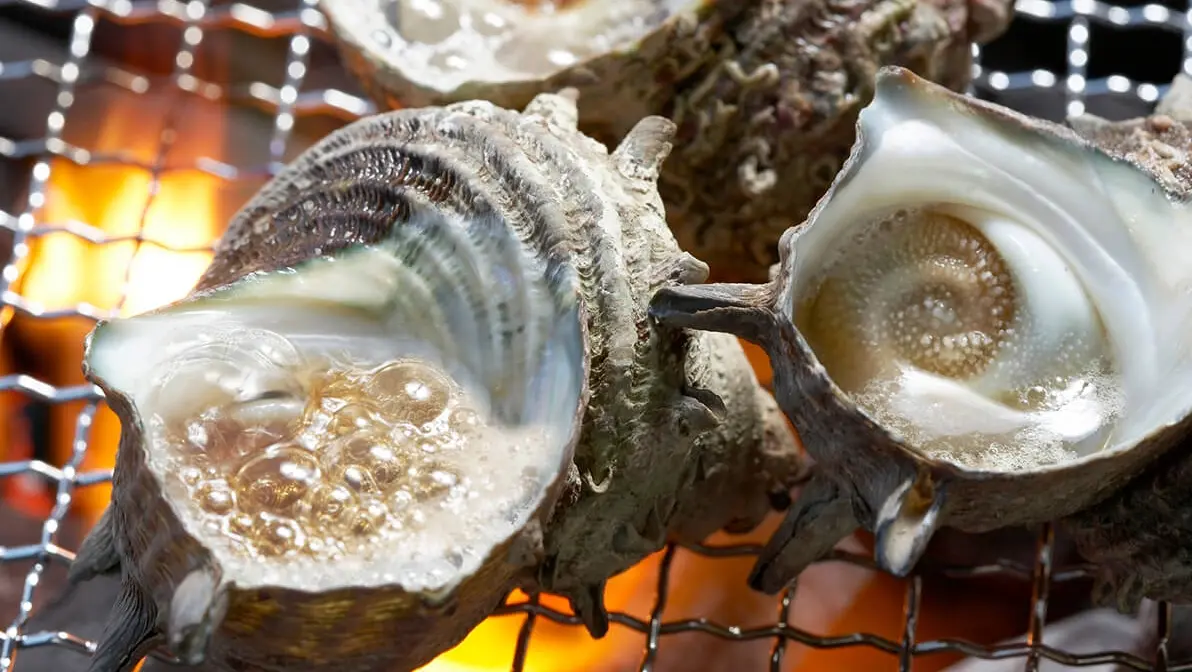
What is the most delicious way to grill tsuboyaki?
If you say, ``I don't really like turban shells...'', you may not have encountered delicious turban shells yet. If you eat the sand with it, it will be ruined, and if you bake it too much, it will become hard. What to cut off, what to do with the inner lid, how to tell when the food is fresh, etc. There are many tips for eating delicious food. Try eating turban shells hand-grilled by professional shellfish divers at AmaHut(Amagoya). When you drizzle soy sauce onto piping hot turban shells, the fragrant aroma of the ocean spreads out, making it an exquisite dish! It's irresistible for drinkers.
Tonteki(PorkSteak)
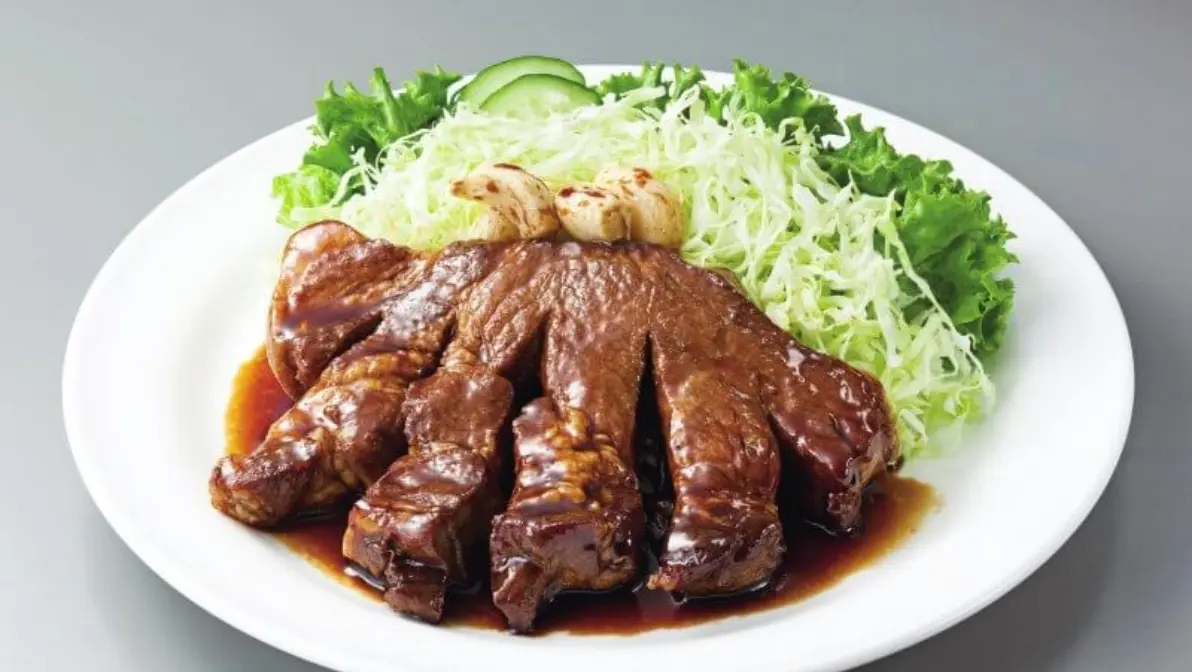
The meal is progressing! B-class gourmet food that will satisfy even the most hearty eaters
Yokkaichi's B-class gourmet dish `` Tonteki(PorkSteak)'' is a dish of thick pork sautéed with garlic and a strong sauce. This is a local menu that has been loved for a long time in Yokkaichi, which is popular among people who love the beautiful factory night view. The voluminous glove-like appearance is impressive! The aroma of garlic and the rich flavor of the sweet sauce go well with the rice and beer. Enjoy the sauce with the juicy meat juices mixed with the shredded cabbage until the end. Each restaurant has its own unique flavors, such as spicy flavors, miso arrangements, and crispy cubes. It is also recommended for stamina recovery.
rice cake
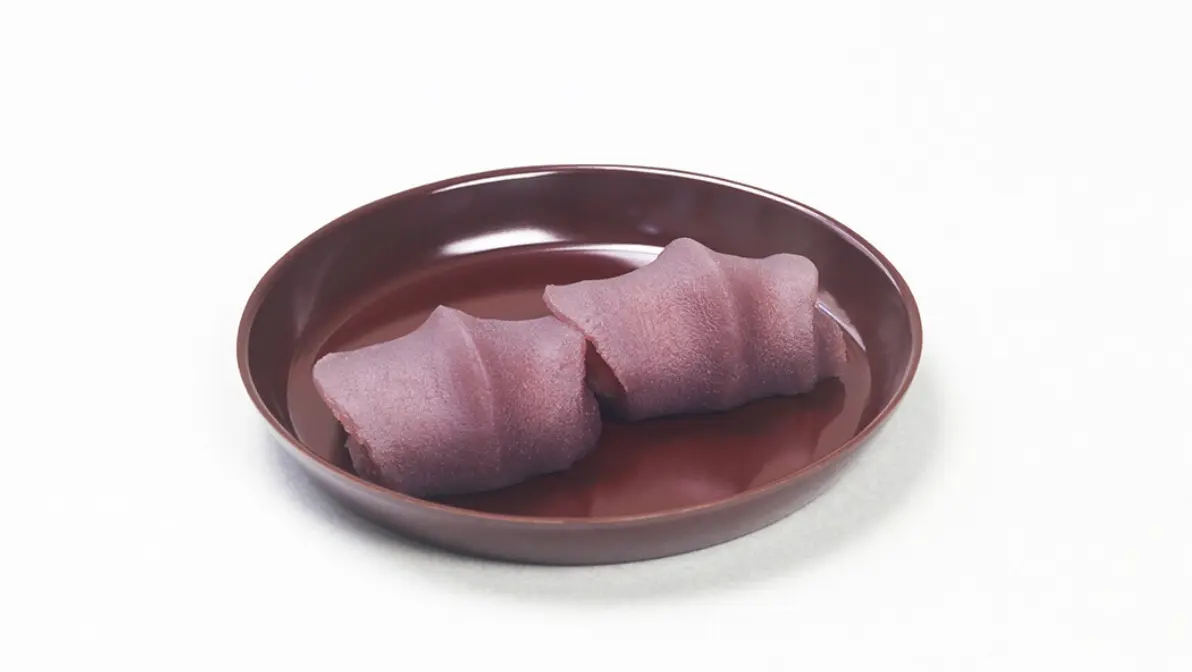
Conquer the wide variety of famous mochi on “Mochi Kaido”!
In the Edo period (1603-1867), when many travelers came to Ise on foot from all over Japan to visit the Ise Shrine, a culture of rice cakes developed that provided a quick energy boost. The Sangu Highway from Kuwana to Ise is also known as the "Mochi Highway," and even today, visitors can enjoy a variety of unique specialty rice cakes, including rice cakes, rice cakes, and rice cakes again. The "Akafukumochi Mochi," in which the bean paste is made to look like the clear stream of the Isuzu River, the "Iwato Mochi," named after an ancient event in Japanese mythology, and the "Henba-Mochi Mochi," derived from a horse that was returned by the Miya River (kaima). Why don't you taste the rice cakes from each street and think about the people's traveling spirit in those days with historical episodes?
Mehari-sushi
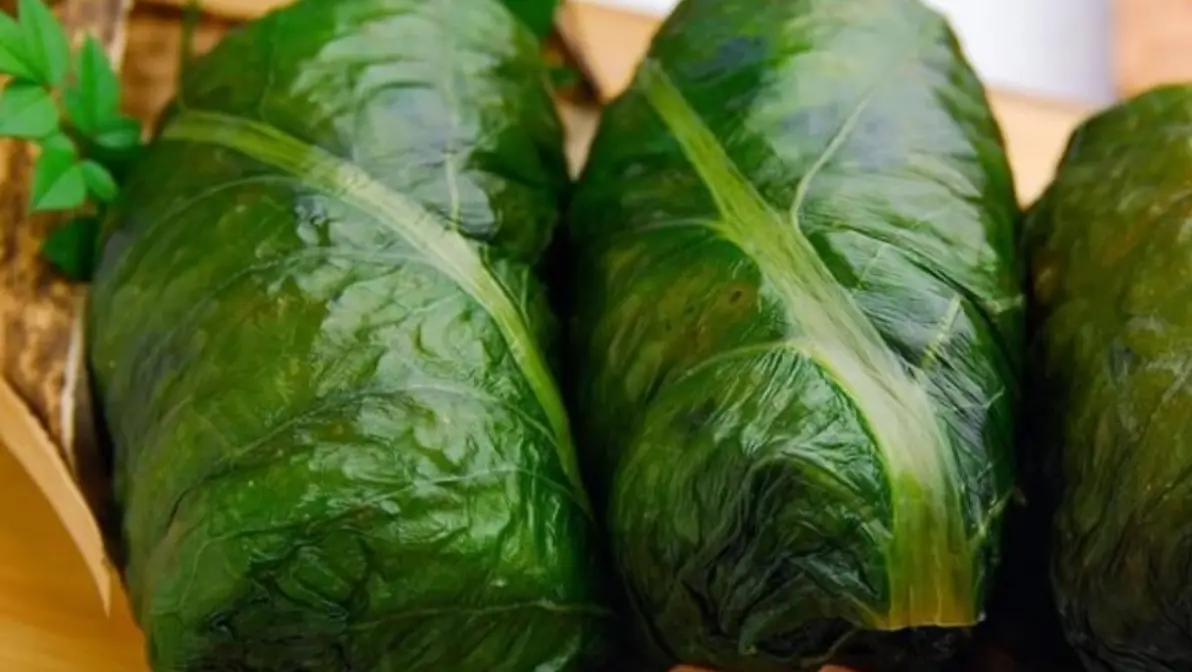
Delicious and delicious, Japan's oldest fast food
`` Mehari-sushi'' is a local dish that is essential for lunch when walking around HigashiKishu area, where the world heritage site ``Kumano Kodo'' is located. It is a simple sushi made of freshly cooked rice wrapped in takana pickles seasoned with vinegar, and is eaten with dried sardines. It's a fast food that has been around since ancient times in Japan, and is said to have its origins in people who could eat it with one hand while working in the mountains. The slight sourness and strong salty air will soothe the fatigue of your mountain hike. You can eat it freshly prepared in the store, or take it home and enjoy it on the way. There are various theories about the origin of the name, such as ``It's so delicious that you open your mouth to eat it'' and ``It's so delicious that you open your mouth to eat it''.
Tekone sushi
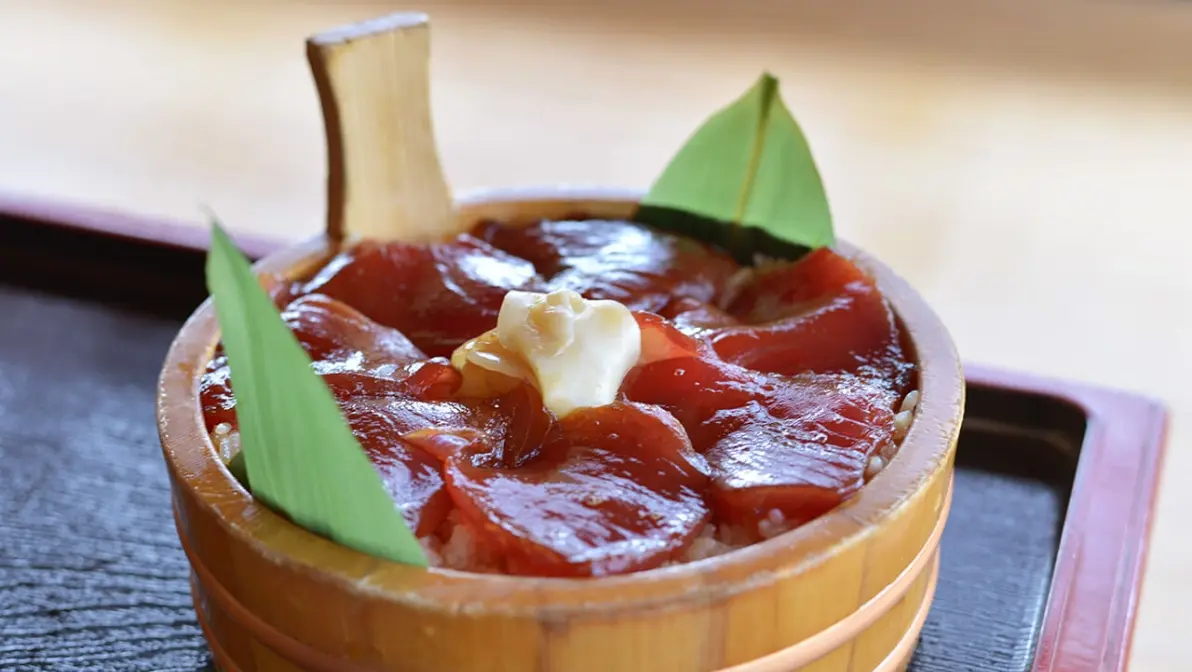
The flavor of soy sauce soaks into the fresh bonito... it goes great with vinegared rice!
The origin of ``Tekone sushi'' is said to be that it was originally a fisherman's dish made by Shima fishermen who dipped freshly caught fish in soy sauce and mixed it into rice by hand. Nowadays, it has been transformed into chirashi sushi, which is made by generously placing red meat such as bonito, tuna, and yellowtail on vinegared rice, and is a popular local dish of Ise-Shima that is used for celebrations and entertaining guests. The taste of soy sauce soaks into fresh bonito, and when mixed with slightly sweet vinegared rice, it goes great! The sticky texture of zuke and the refreshing sensation created by aromatic condiments such as shiso leaves, ginger, seaweed, and sesame are a perfect match. If you're thinking of having a seafood bowl in Ise-Shima, be sure to try Tekone Sushi!
Sohei-nabe
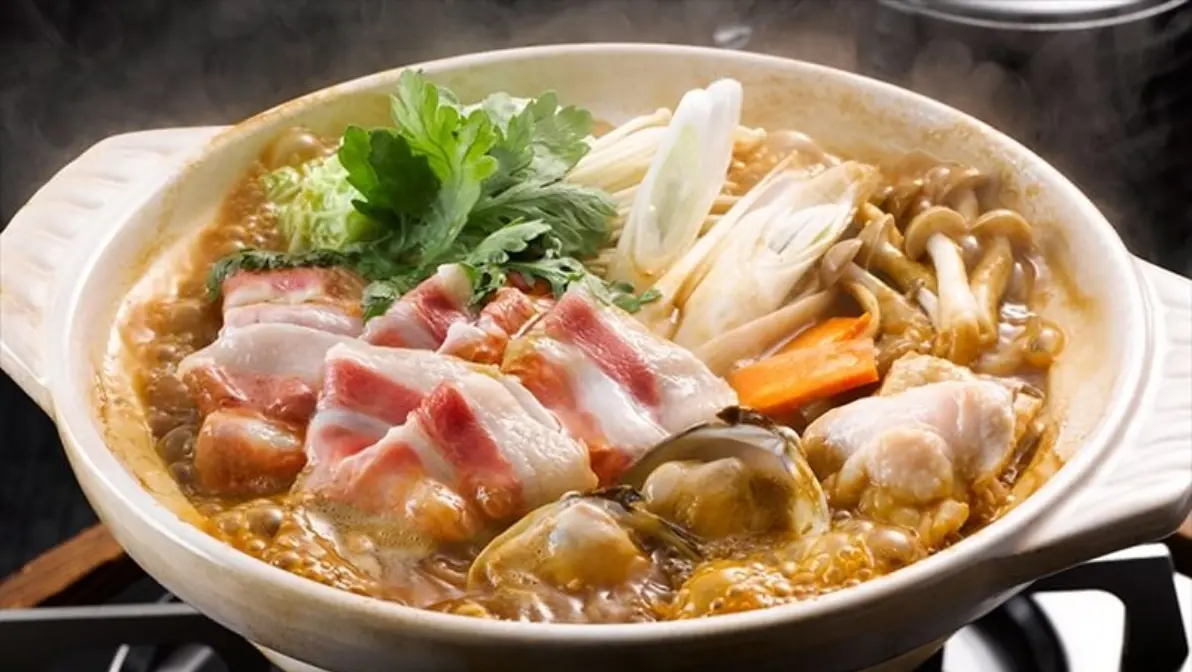
This hot pot is said to have been eaten by the warrior monks of Mitakeji Temple in Yunoyama Onsen as a source of stamina. It is a hearty combination of ingredients such as wild boar, deer, and chicken meat, and is simmered in Sohei miso (white miso, red miso, and sesame seeds). We use plenty of vegetables grown locally in KomonoTown. Serve with grated mountain potatoes if you like. Various flavors spread in your mouth and create a unique flavor. Currently, it is provided at various inns in Yunoyama Onsen.
KameyamaMisoYakiUdon
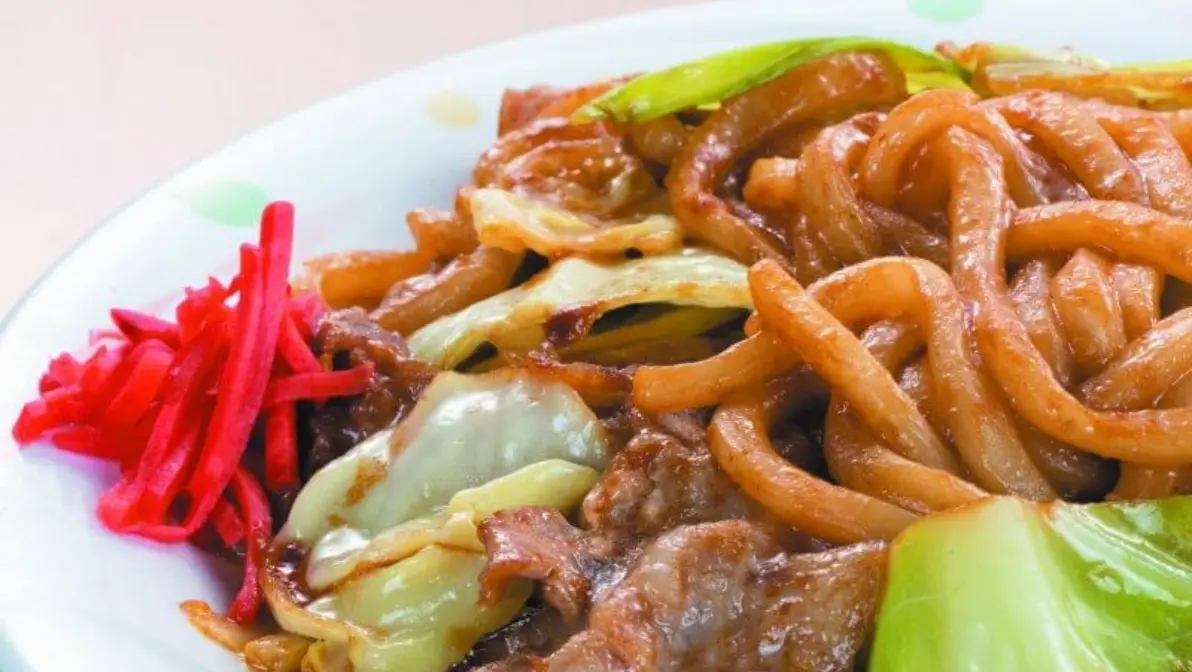
Udon noodles are grilled on a griddle with vegetables and meat, then seasoned with a red miso-based miso sauce. The store has its own unique blend of miso, so you can enjoy a variety of flavors. The aroma of miso will whet your appetite, and the tangy, sweet and salty taste will make you addicted to it. KameyamaCity, which National Route 1 passes through, has had a lot of truck traffic for a long time, and there are many restaurants where drivers can eat there. The menu that was served at that restaurant was this "KameyamaMisoYakiUdon." It is a gourmet dish representing KameyamaCity that can now be made at home.
TsuGyoza
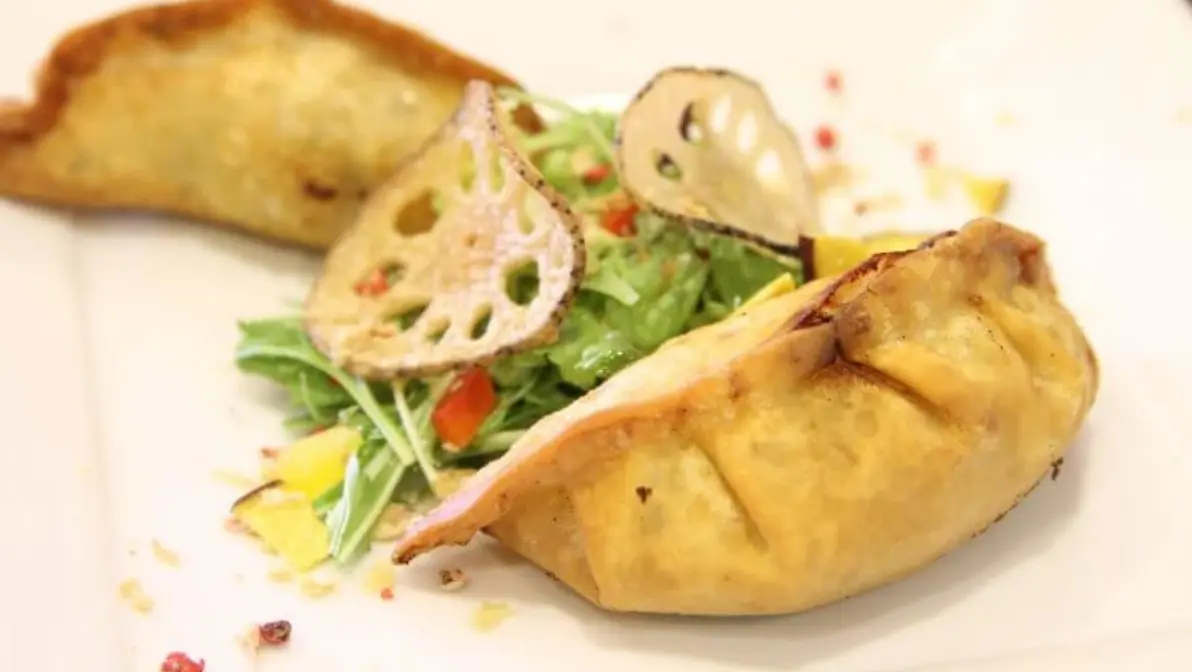
`` TsuGyoza'' are large fried gyoza dumplings that are filled with filling wrapped in a 15cm diameter skin and deep-fried in oil. You might be surprised at its size when you see it for the first time. It started being served in school lunches in Tsu City TsuCity Prefecture around 1985, and is still a very popular menu item among children. There are many restaurants around TsuCity where you can eat TsuGyoza. The ingredients inside are original to each store. When you come to TsuCity, please try and compare the unique "TsuGyoza" from various shops!
Matsusaka chicken grilled meat
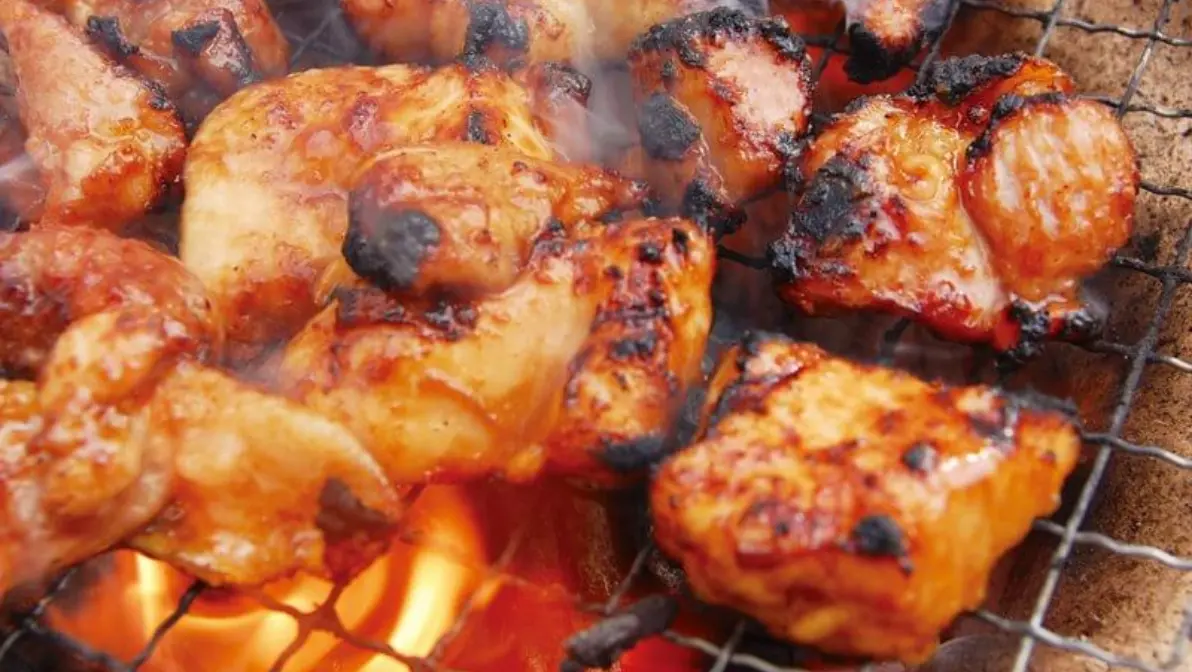
When it comes to Matsusaka, it's not "cow" but "chicken"? Matsusaka Chicken Yakiniku is an unexpected gourmet dish that is popular in Matsusaka. Chicken is coated in a sweet and spicy rich miso sauce and then grilled. The smoke is thick and the aroma of miso is in the air, and it goes perfectly with rice and alcohol! The type of chicken varies slightly depending on the store, but tender and juicy young chicken (a mixture of breast and thigh) and hine chicken (parent chicken) are commonly eaten. The suburbs of MatsusakaCity are areas with many farmers, and many households keep chickens that lay eggs, so there was a custom of eating chicken yakiniku, so restaurants started offering it.
Ninjutsu hot pot
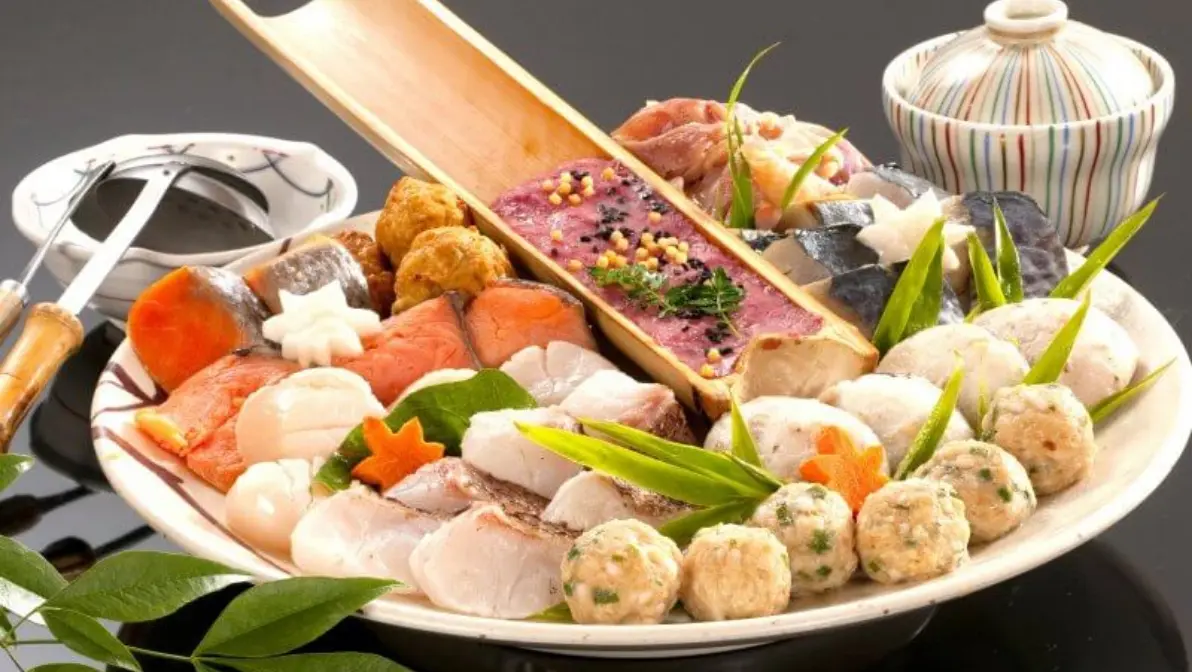
This is a famous hot pot dish that can be enjoyed at the foot of Akame Shijuhachi Falls, where Momochi Tanba, the founder of TheAkame48Falls ninja, is said to have trained. This specialty dish uses over 20 types of seasonal ingredients, including Iga seasonal vegetables, locally produced Iga beef, young chicken, wild boar, pork, wild chicken, matsutake mushrooms, and garland chrysanthemums, and is served with several different sauces for a variety of flavors. This is a hotpot dish unique to the Iga region that is a modern twist on the hotpot dish that Iga-ryu ninjas ate as a nutritional supplement. Eating ninjutsu hotpot and soaking in Akame Onsen will relieve your daily fatigue.
tofu dengaku
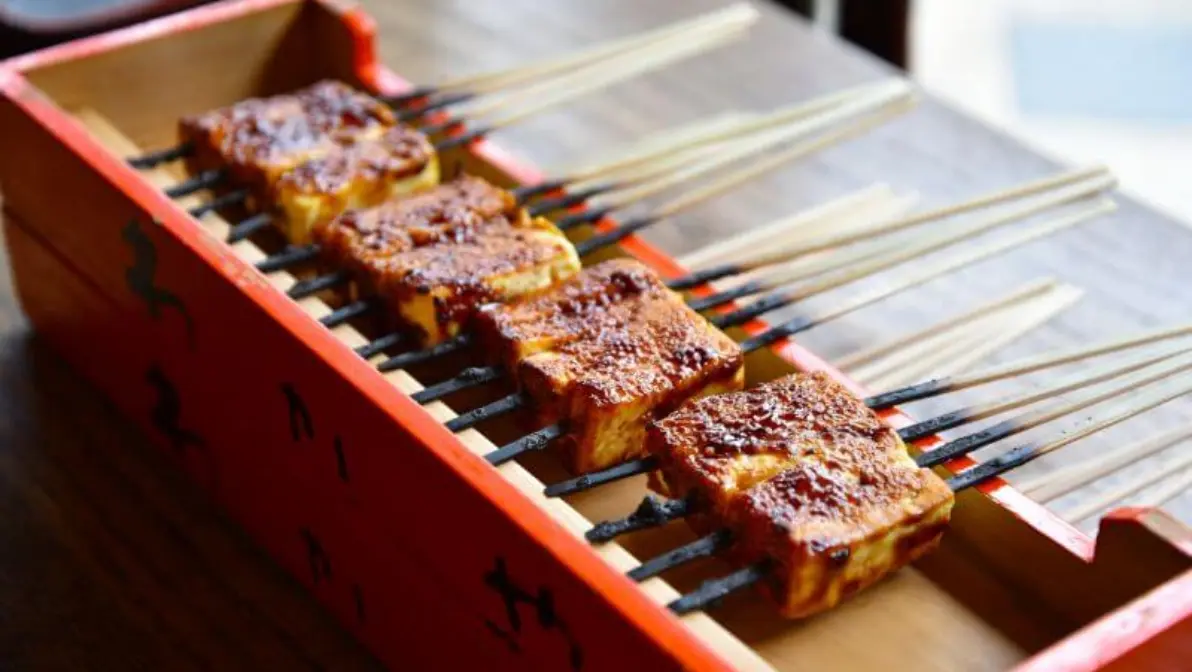
Tofu dengaku is one of Iga's signature delicacies, and in the past it was valued as a valuable protein source because seafood was hard to come by. The tofu is skewered and slowly grilled, then coated with a mellow-tasting miso. The aroma of grilling over charcoal is irresistible! In the Iga region, people serve tofu dengaku, which is made by coating tofu with ``tama miso,'' made by rolling homemade miso into a ball and hanging it up to age, and then grilling it over charcoal until it becomes fragrant. I did.
Nabari beef soup
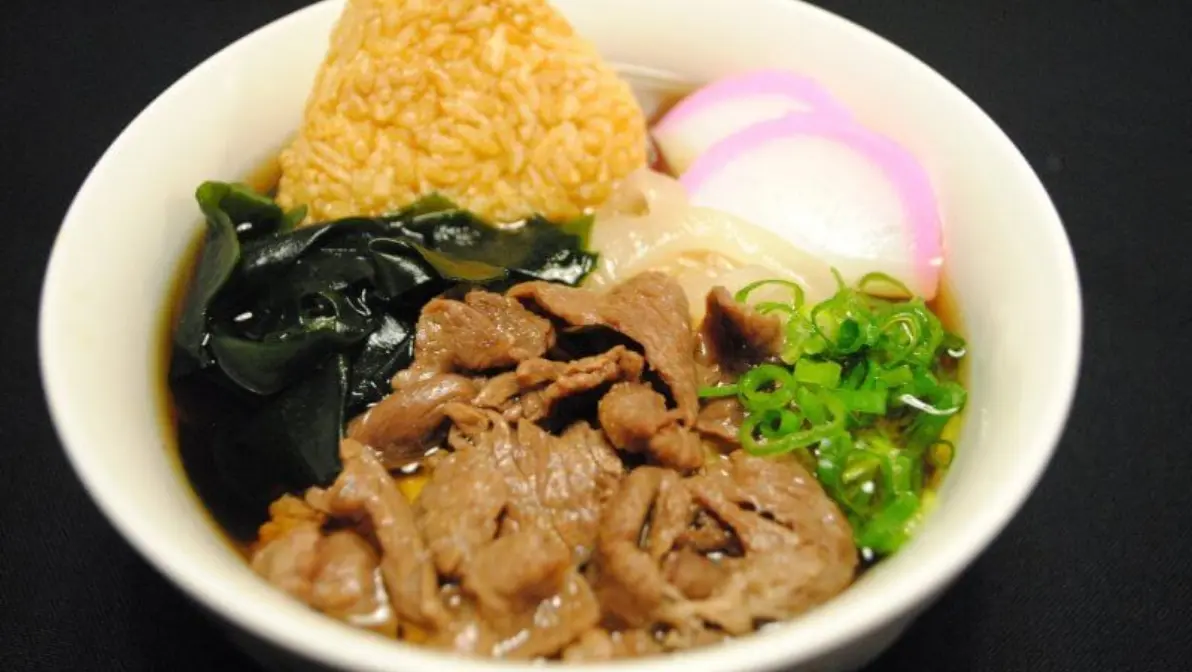
Nabari beef soup is a soup made with Iga meat and local vegetables made with bonito and soy sauce, and is said to have its origins as a butcher's side dish. It started being sold around 2007 in order to let as many people know about Iga beef and its hometown of Nabari. Defined as ``soup that always uses Iga beef,'' each restaurant offers a variety of flavors and ingenious variations, so you can enjoy the unique taste of Iga beef, from individual items to set meals. There is a red curtain hanging in front of the eaves of the shop where you can enjoy Nabari beef soup, so it is a landmark.
Burger
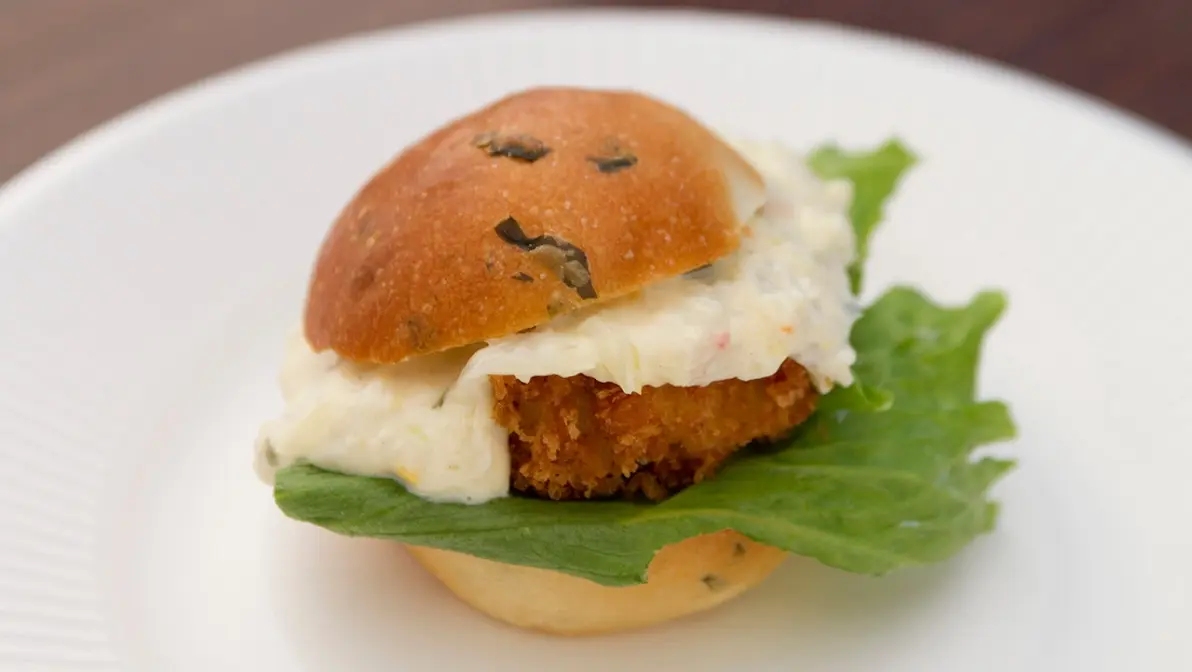
Ise shrimp, octopus, oysters, oysters, abalone, etc... Our local burgers are made with patties made with fresh seafood and ingredients from Toba, so you can casually enjoy the unique flavors of Toba. The great thing about it is that it's made only after receiving your order, so you can eat it freshly made! It's only sold in TobaCity, so it's a must-try when you come to Toba. The ingredients change depending on the store, so you can enjoy a variety of burgers. We also recommend the Burger Tour.
pacific saury sushi
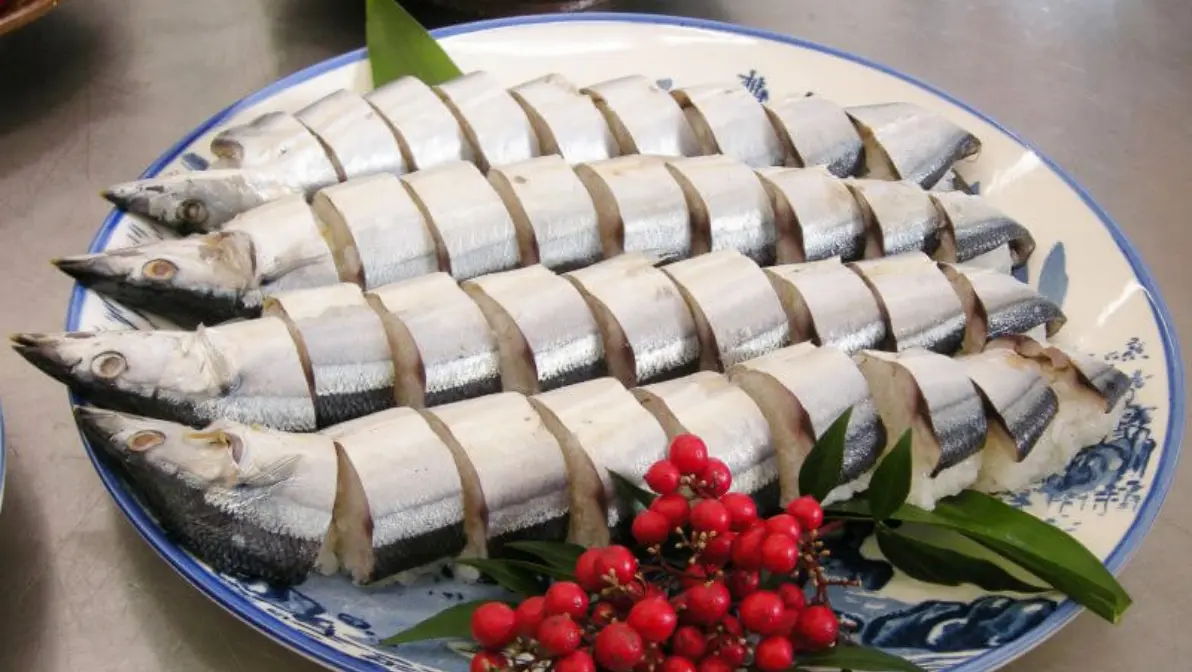
Sanma sushi has been popular in HigashiKishu area as a typical local flavor that is essential for celebrations, festivals, and other gatherings. Sanma with a low fat content caught in the Kumano Sea is cut open on the back, salted, washed, then soaked in mandarin vinegar and placed on top of sushi rice with the tail and head still attached. Even within HigashiKishu, the method of making it differs from Kihoku (KihokuTown) to Kinan (south from Kumano), and the taste differs depending on the store, so please try comparing them.
